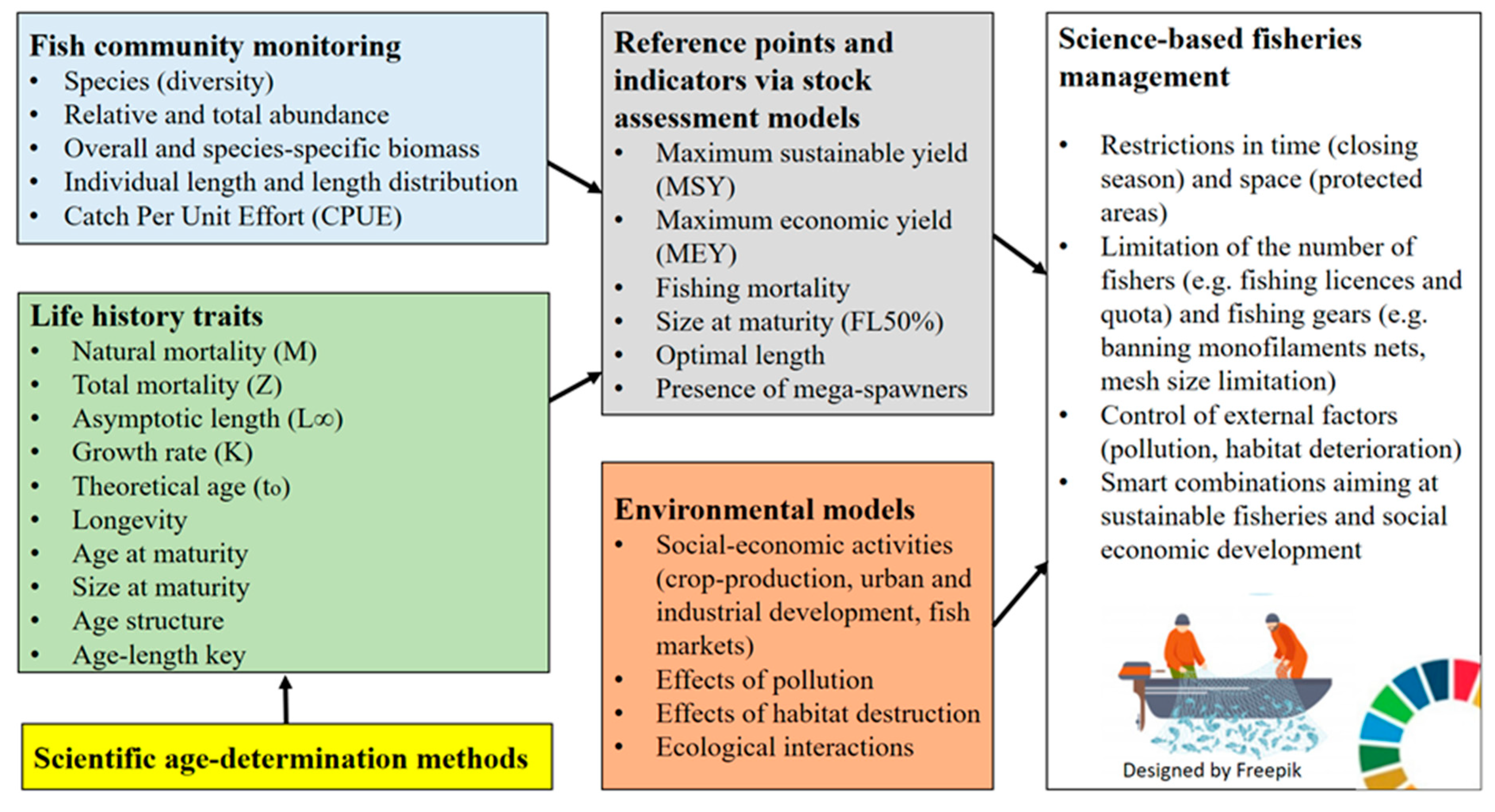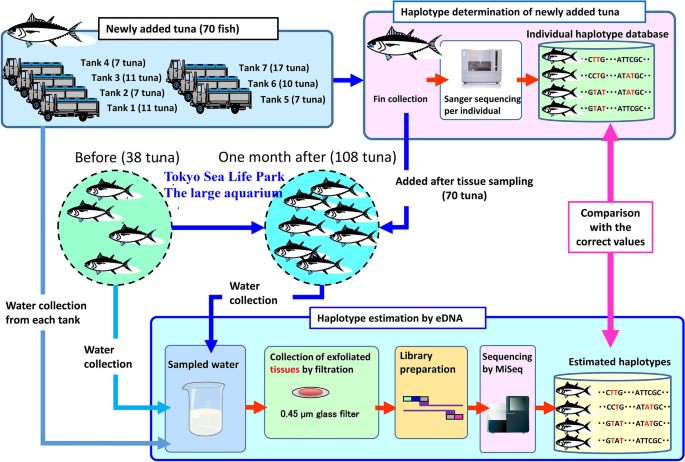The Traditional Approach to Estimating Fish Populations Is the
In your second sample you collect 325 fish C. The DEPM package is a tool to estimate spawning stock biomass for fish populations using Daily Egg Production Methods DEPM.
Hundreds of factors may be needed in complex situations involving multiple stock areas several fishing fleets and lengthy time series data.

. In this study we compared population estimates obtained using N-mixture models with estimates obtained applying more traditional approaches ie removal sampling and capture-mark-recapture. Additional time is needed to prepare and process the otolith for ageing. Close-kin mark-recapture CKMR methods have recently been used to infer demographic parameters such as census population size and survival for fish of interest to fisheries and conservation.
Traditionally fish stocks were managed individually to keep them at sustainable levels. Catch fish mark them and return to them to the lake M Catch some fish again C Count the marked recaptured fish R Estimate the population N M x CR Example. Ask students to estimate the size of the population.
Population estimates of wolves are necessary for sustainable management particularly in areas where there is elevated concern for the populations viability. We compare two types of STC. This method involves restrictive assumptions about capture probabilities that can lead to biased estimates especially of population size and recruitment.
N 243 x 235 27. Fish and Game to evaluate a new method of assessing wolf populations in Southeast Alaska. In your first sample you collect 243 fish M.
Twenty years ago theory suggested that STCs could be as effective at managing exploited fished populations at least in terms of numerical yield as traditional fisheries approaches that control fishing mortality directly such as through quotas but the effects of reproductive hyperallometry were not considered. In the end how closely a fish stock assessment model fits the actual data indicates the reliability of the historical estimates and future predictions for a fish stock. Target fish caught in Trial 1 marked M target fish caught in Trial 2 marked C Total recaptured fish in Trial 2 marked R Estimate of target species population N.
Lake Fish Population Estimates by Mark-and-Recapture Methods James C. Until this study the most recent wolf population estimate for GMU 2 was produced for fall 1994 n. Your population estimate N is.
The ecosystem approach builds on the single-species approach by also accounting for how species interact with each other with the environment and with humans. These methods have advantages over traditional mark-recapture methods as the mark is genetic removing the need for physical marking and recapturing that. Two methods are available in this package.
Populations of fishes in lakes. An index is defined as a number or property that is presumably. Natural population returning them to that population and subsequently recapturing some of them as a basis for estimating the size of the population at the time of marking and release.
This method consists of estimating entire lake populations by extrapolating from the number of fish captured using nets deployed in different parts of the body of water. A SIMPLE METHOD FOR ESTIMATING THE FOOD CONSUMPTION OF FISH POPULATIONS FROM GROWTH DATA AND FOOD CONVERSION EXPERIMENTS DANIEL PAULy2 ABSTRACf Experimental data on the gross food conversion efficiency offishes KI - growth incrementfood in gested are usually reduced to a model of the form K I aWb. Beginning in June of 2013 a towed.
New approaches to estimating individual contributions to population growth and changes in distributions of quantitative traits and alleles include genetic analyses which can lead to even more detailed understanding of the potential for a population to adapt to variations in environmental factors Pelletier et al. Once students have conducted two trials have them estimate the size of the target species population N using the following formula. This procedure was first used by CJG.
Efficiency will produce the most reliable estimates of fish population parameters. Maximum sustained yield model to project maximum number of fish that can be harvested annuals without causing population drop. Schneider Estimating the actual numbers of fish in a lake is a difficult and time-consuming process for a number of reasons.
The general process for estimating a fish population using the mark-and-recapture method entails. Traditional ageing methods to estimate the age of each fish require a reader to visually count growth rings on a fishs otolith or ear stone using a microscope. The Jolly-Seber method has been the traditional approach to the estimation of demographic parameters in long-term capture-recapture studies of wildlife and fish species.
Therefore implementing and understanding the strengths and weaknesses of new approaches which incorporate acoustic and optical methods has become a priority for reef fish stock assessment. It is shown that the model K I 1. Collecting a sample of fish of the target species from a discrete section of stream during an initial marking run.
The New Mexico Department of Game and Fish NMDGF annually censuses this population providing a unique situation to test the veracity of the camera trap-based distance sampling technique. Petersen in studies of marine fishes and FC. DEPM - the traditional DEPM which uses mean weight and mean fecundity to.
Lincoln in studies of waterfowl populations and is often referred. What is the traditional approach to estimating fish populations. Therefore handling time per otolith is.
Understanding bias and precision becomes particularly important when determining whether to estimate population parameters directly or to estimate population parameters in-directly by means of indices. Estimating population abundance of wolves in Southeast Alaska is challenging because the densely forested landscape obscures visibility and lowers success of traditional methods such as aerial surveys and radio collar mark-recapture. Giving fish identifying marks such as a tag or temporary fin clip.
Of those 325 fish 27 were marked from the 1st sample. Tabulating data by species and size. Reef fish species tend to reside over high relief habitat which makes them difficult to sample with traditional gears such as nets and trawls.
How does the newer optimum sustained approach to estimating fish populations differ from traditional.

Water Free Full Text Scientific Methods To Understand Fish Population Dynamics And Support Sustainable Fisheries Management Html

Estimation Of Tuna Population By The Improved Analytical Pipeline Of Unique Molecular Identifier Assisted Haced Seq Haplotype Count From Edna Scientific Reports

Toward A Better Understanding Of Fish Based Contribution To Ocean Carbon Flux Saba 2021 Limnology And Oceanography Wiley Online Library

Comments
Post a Comment